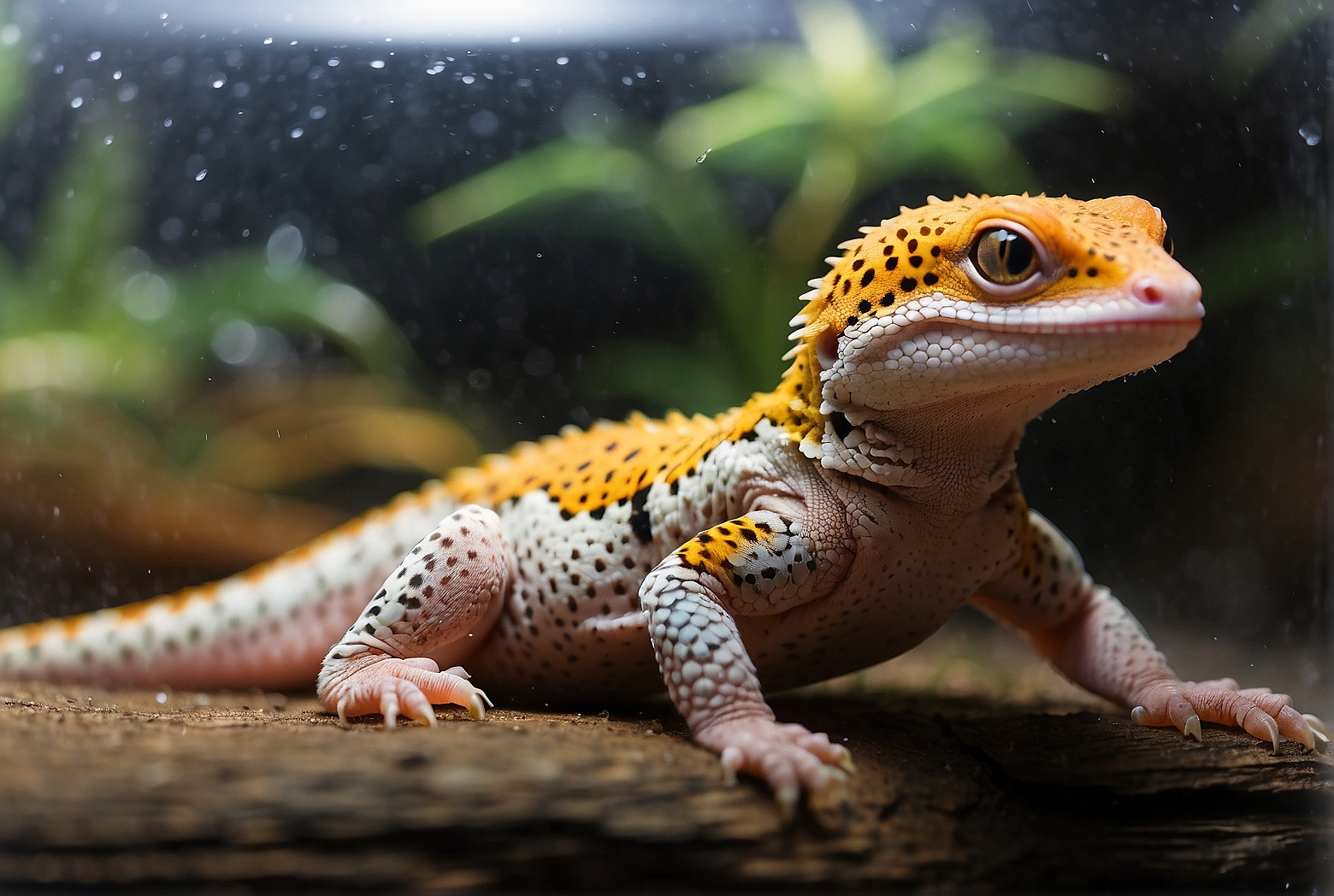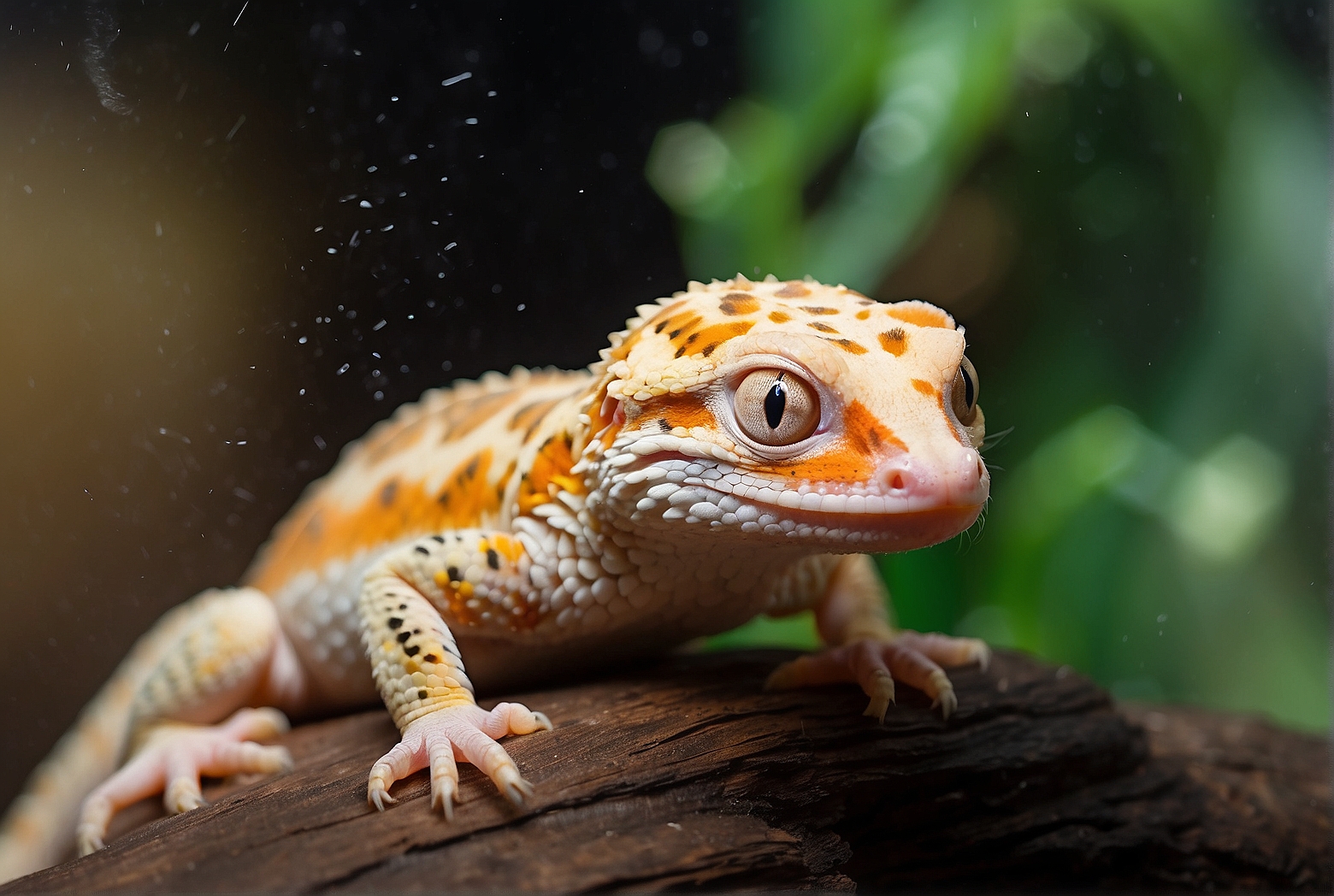Are you a proud owner of a leopard gecko or considering getting one as a pet? Then you already know how crucial it is to provide them with the right temperature and humidity levels to ensure their well-being. In this article, we will explore the essential factors that contribute to creating the perfect environment for your leopard gecko. Understanding the ideal temperature and humidity ranges is not only essential for their health but also for their overall happiness as they thrive in specific conditions. So, let’s dive into the world of leopard gecko temperature and humidity to ensure your scaly companion lives a comfortable and content life.
Temperature Requirements
Optimal temperature range
For your leopard gecko’s overall health and well-being, maintaining the right temperature in its enclosure is crucial. The optimal temperature range for leopard geckos is between 88°F to 92°F (31°C to 33°C) on the hot side of the enclosure and around 70°F to 80°F (21°C to 27°C) on the cool side. This temperature gradient allows the gecko to self-regulate its body temperature by moving to different areas of the enclosure.
Temperature gradient
Creating a temperature gradient in the enclosure is essential to mimic the gecko’s natural habitat. This can be achieved by placing a heat source, such as an under-tank heater or a heat pad, on one side of the tank. This area should provide a higher temperature, while the other side remains cooler. The temperature gradient ensures that your gecko can choose the temperature that suits its needs at any given time.
Cool side temperature
While the hot side of the enclosure provides the necessary warmth, it is equally important to have a cool side to prevent overheating. The cool side should be maintained at around 70°F to 80°F (21°C to 27°C). This allows the gecko to escape the heat and regulate its body temperature when needed.
Basking spot temperature
Leopard geckos also require a specific basking spot temperature. The basking spot is an area in the enclosure where the gecko can raise its body temperature by directly exposing itself to a heat source. It is recommended to provide a basking spot temperature of around 90°F to 95°F (32°C to 35°C). This allows the gecko to properly digest its food and promotes overall health and digestion.
Humidity Requirements
Ideal humidity level
Leopard geckos are native to dry desert regions, so it is important to maintain a low to moderate humidity level in their enclosure. The ideal humidity level for leopard geckos is between 30% to 40%. This level ensures that the gecko’s skin does not become too dry and minimizes the risk of respiratory issues.

Providing a humid hide
While leopard geckos do not require high humidity, it is still beneficial to provide a humid hide within their enclosure. A humid hide can be created by placing a small container with damp substrate (such as moist sphagnum moss or paper towel) in a designated area. This allows the gecko to retreat to a more humid space when it needs to shed its skin or if it is experiencing any shedding difficulties.
Avoiding excessive humidity
Leopard geckos are highly sensitive to high humidity levels, which can lead to respiratory infections and other health issues. It is crucial to avoid excessive humidity in their enclosure. To achieve this, ensure proper ventilation, avoid spraying water directly into the enclosure, and regularly monitor the humidity level with a hygrometer.
Temperature and Humidity Monitoring
Using a thermometer and hygrometer
To maintain the optimal temperature and humidity levels for your leopard gecko, it is essential to use a thermometer and hygrometer. A thermometer helps you monitor the temperature within the enclosure, while a hygrometer measures the humidity levels. These devices allow you to make any necessary adjustments to create a suitable environment for your gecko.
Placing temperature and humidity gauges
To accurately monitor the temperature and humidity, it is important to place the gauges in key areas of the enclosure. For temperature, position the thermometer on the hot side, cool side, and near the basking spot. This will give you a comprehensive understanding of the temperature gradient within the tank. As for the hygrometer, place it in a central location to get an accurate reading of the overall humidity levels in the enclosure.
Lighting and Heating
Importance of proper lighting
Proper lighting is crucial for leopard geckos as it helps regulate their circadian rhythm and promotes natural behaviors. They are nocturnal creatures, so providing a day-night cycle is essential. Using a light source with a timer, ensure they receive approximately 12-14 hours of light during the day and complete darkness during the night. Avoid exposing them to direct sunlight as it can lead to overheating.
Using heat sources
To maintain the required temperature gradient, various heat sources can be used. Under-tank heaters or heat pads placed on one side of the enclosure provide a gentle, constant heat that resembles the warmth from the ground. It is important to use a thermostat with any heating device to prevent the enclosure from getting too hot and causing harm to your gecko.

Preventing overheating
Overheating can be harmful to leopard geckos, so it is vital to take preventive measures. Ensure that the heat source does not cover the entire bottom surface of the enclosure, allowing the gecko to retreat to cooler areas. Regularly monitor the temperature using a thermometer, and adjust the heat source or thermostat if needed. Additionally, provide multiple temperature gradient spots to give the gecko more options to regulate its body temperature.
Cooling and Nighttime Temperature
Providing cool areas for gecko
While leopard geckos require warmth, it is equally important to provide cool areas within their enclosure. This allows them to escape the heat and avoid overheating. You can achieve this by providing hides or caves on the cool side of the enclosure where the temperature remains around 70°F to 80°F (21°C to 27°C). Creating a diverse environment with different temperature zones encourages natural behaviors.
Nighttime temperature requirements
Leopard geckos are nocturnal creatures, and at night, they require slightly cooler temperatures to mimic their natural environment. The nighttime temperature should be around 70°F to 75°F (21°C to 24°C). You can achieve this by turning off any heating devices or using a ceramic heat emitter to maintain a constant, gentle heat without emitting light. It is important to avoid using bright lights during nighttime as it can disrupt their sleep and natural behavior.
Methods to Increase Humidity
Misting the enclosure
If you need to increase the humidity level in the enclosure, misting the tank with water can help temporarily raise the humidity levels. However, be cautious not to over-mist, as excessive humidity can lead to health issues. Use a fine mist spray bottle to lightly mist the tank, focusing on the cool side.
Using a humidifier
Using a humidifier is another effective method to increase humidity in the enclosure, especially during shedding periods. Place a small humidifier outside the tank, aiming the mist towards the cool side. This allows the moisture to disperse and increase the overall humidity without directly impacting the gecko’s resting areas.
Providing a water bowl
Adding a shallow water bowl in the enclosure serves multiple purposes. It not only provides a water source for the gecko to drink from but also increases the humidity in the surrounding area. Ensure the water is changed regularly to maintain cleanliness and prevent bacterial growth. Placing the water bowl on the cool side of the enclosure helps raise the humidity level without affecting the temperature gradient.
Methods to Decrease Humidity
Increasing ventilation
If you find that the enclosure’s humidity levels are consistently higher than the recommended range, increasing ventilation can help decrease humidity. Ensure there are enough air vents or holes in the enclosure to allow proper air circulation. Positioning a small fan near the enclosure can also assist in reducing humidity levels.
Using a dehumidifier
For extreme cases of high humidity, using a dehumidifier in the room where the enclosure is located can be effective. It helps to remove excess moisture from the air and maintain a more suitable humidity level. However, be cautious not to make the environment too dry, as leopard geckos still require a moderate level of humidity.
Removing excess water sources
Evaluate the enclosure and identify any additional sources of moisture that may contribute to high humidity levels. This could include damp substrate, wet hides, or leaking water bowls. Regularly check and dry any areas that may be prone to excess moisture.
Managing Temperature and Humidity in Different Seasons
Adjusting for hot summer months
During hot summer months, it is important to monitor the enclosure’s temperature more closely. If the ambient temperature is already high, additional heating devices may not be necessary. However, it is important to provide adequate ventilation and ensure the gecko has access to cool areas to prevent overheating. Regularly check the temperature gradient and make adjustments as needed.
Preparing for cold winter months
In colder winter months, you may need to increase the temperature in the enclosure to ensure the leopard gecko remains warm enough. This can be achieved by using additional heat sources, such as a ceramic heat emitter or a heat lamp. Monitor the temperature and adjust accordingly to maintain the optimal temperature gradient and prevent the gecko from getting too cold.
Common Temperature and Humidity Issues
Signs of overheating
It is important to be aware of signs that indicate your leopard gecko may be overheating. These signs include excessive lethargy, panting, loss of appetite, seeking cool areas persistently, or stretching out on a cool surface. If you notice any of these signs, immediately check the temperature in the enclosure and make necessary adjustments to prevent further overheating.
Signs of dehydration
Monitoring your gecko’s hydration is equally important. Signs of dehydration may include sunken eyes, wrinkled or loose skin, reduced appetite, or change in urate color (urates should normally be white). If you suspect dehydration, ensure there is a shallow water bowl available, consider misting the enclosure lightly, and even offer a water droplet directly on the gecko’s snout to encourage hydration.
Damages caused by incorrect temperature or humidity
Maintaining the correct temperature and humidity is crucial to prevent various health issues in leopard geckos. Incorrect temperature or humidity levels can lead to respiratory infections, poor digestion, shedding difficulties, and overall stress on the gecko’s health. It is crucial to monitor and maintain the optimal conditions to ensure the well-being of your leopard gecko.
Tips for Maintaining Ideal Temperature and Humidity
Regular monitoring and adjustments
Consistently monitor the temperature and humidity levels within the enclosure using thermometers and hygrometers. Regularly adjust the heating and humidifying devices accordingly to maintain the optimal range. Remember to consider the seasons and make necessary changes to accommodate temperature fluctuations.
Providing multiple hides
Leopard geckos require hiding spots to feel secure, and providing multiple hides throughout the enclosure is beneficial for temperature regulation. Place hides on both the warm and cool sides to allow the gecko to choose its preferred area based on its temperature needs. This prevents stress and ensures the gecko can easily regulate its body temperature.
Optimizing the gecko’s enclosure
To help maintain ideal temperature and humidity levels, ensure the gecko’s enclosure is properly set up. Use appropriate substrate, such as reptile carpet or paper towels, that doesn’t retain moisture excessively. Position heat sources correctly to create the desired temperature gradient. Additionally, regularly clean the enclosure to prevent the build-up of bacteria, mold, or excess moisture that can negatively impact temperature and humidity levels.
By following these guidelines, you can provide your leopard gecko with the optimal temperature and humidity conditions, allowing it to thrive in a comfortable and healthy environment. Remember to regularly monitor and make any necessary adjustments to create a suitable habitat for your gecko’s needs.
